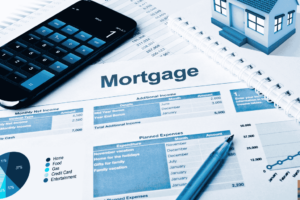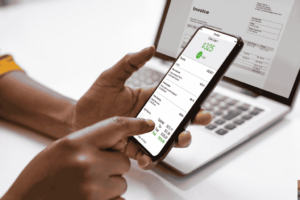Home values increase over time, generating equity. However, upside-down mortgages are different. Have you ever felt that your mortgage is running your life and you are just following along? An upside-down mortgage can feel exactly like that. It is frustrating and exhausting. No need to worry; there is a way out.
Let’s break this down, solve the problem straight away, and find a solution that works for you. A fresh start could be just around the corner when you sell your house for cash. Read on to find out everything you need to know.
What is an Upside Down Mortgage?
An upside-down mortgage occurs when a homeowner owes more on their mortgage than the value of their home at the time of purchase. The situation is also referred to as “underwater” or “negative equity.” It usually occurs when the value of a home declines. Consequently, if the homeowner were to sell their home, the sale would not generate enough money to cover the remaining loan balance.
Let’s say you bought a $300,000 house with a 20% down payment, resulting in a mortgage of $240,000. When the home’s value suddenly falls to $230,000, your mortgage would exceed the home’s value, making you upside down on your mortgage.
What causes an upside-down mortgage?
Many factors can lead to upside-down mortgages, including a steep market decline or a borrower who has missed payments. Understand how upside-down mortgages happen so you can avoid them. A variety of factors can cause overhead mortgages:
- Declining home values: Your home’s value may fluctuate depending on the local average property value. Imagine buying a house a few years ago and owing $500,000 on the mortgage. Inflation and foreclosures cause the property value around you to decrease, making your home worth $250,000 while owing $500,000.
- Missed mortgage payments: Your mortgage loan interest can increase if you fail to make payments, making it more challenging to repay. The overall loan will continue to rise as long as interest is accumulated and the principal remains constant.
- Little-to-no down payment: Generally, mortgage lenders require a 20% down payment, but there are ways to avoid it. The less you put down, the less equity you’ll have to start with; if the market drops, you’ll have no cushion to fall back on.
What can you do if you have an upside-down mortgage?
It can be frustrating to have too much debt on your property. If your mortgage is upside-down, there are several ways to recover:
- Loan modifications:
Modifying your loan may lower your monthly mortgage payments, allowing you to regain good standing. It may, however, result in a longer mortgage term.
- Short sales:
Lenders agree to short-sell properties at current market value as part of a short sale. Although it isn’t profitable, it may be their only choice before a foreclosure is considered.
- Use the cash from the sale of your house:
The best way to deal with your mortgage is to pay it down as much as possible. A better option may be to sell your home and use the proceeds to pay off your mortgage if you’re considering relocating.
Traditional home sales can be used to pay off debt. Ideally, it would also cover your home equity loans, as well as your closing costs. Anything that gets you closer to paying off your mortgage can be ideal.
- Foreclosure:
Your home will be taken over by the lender in this situation. The deed of foreclosure should only be considered after you have exhausted all other options because it can significantly affect your ability to obtain other types of retirement loans.
Selling Your House Fast in Taxes: The Cash Option
Why Consider Selling for Cash?
The best way to get out of an upside-down mortgage situation is to sell your house for cash. A cash buyer is often an investor looking for a property to renovate or rent out for a profit. This usually means fewer headaches since they don’t require repairs or lengthy negotiations.
It’s like selling your house without having to replace or repair it! You can find cash buyers through Tando Advisors who understand your situation and are prepared to offer your property quickly.
The Process of Selling Your House:
With Tando Agents, selling a house quickly involves:
Estimate market value:
Future real estate trends are difficult to predict, so waiting for the home’s value to rise before selling is risky. Research the estimated value of the house in its current condition. Real estate experts can also assist you in evaluating a property.
Consult with the mortgage lender:
When a mortgage is upside down, selling the home can be challenging. It’s still a good idea to speak with your mortgage lender. Your situation will be analyzed, and potential offers will be discussed by Tando Advisors.
Receive an Offer:
Take the time to evaluate each offer, regardless of the buyer type. A cash offer will be made based on your home’s current market value.
Close Quickly:
When you accept the offer, the closing can occur in days rather than months.
The process removes the inconvenience of traditional selling methods, such as showings and waiting for buyers who may change their minds.
Making the Decision: Is a Fast Cash Offer Right for You?
The best way to decide whether a fast cash offer meets your needs is to reflect on your current and future financial goals. This pathway can provide a rapid and straightforward resolution to homeowners facing underwater mortgages on older homes and facing the urgency to sell them.
Upside-down mortgages don’t have to be a lifelong struggle. A cash sale can be a good option if you’re stressed over payments, facing foreclosure, or just looking for a fresh start. Tando Advisors are here to make the process easy, fast, and stress-free. Make the first step towards a better financial future today.













